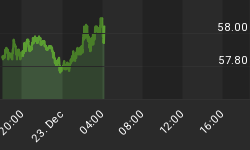"No legal tender law is ever needed to make men take good money; its only use is to make them take bad money." (Stephen T. Byington)
The U.S. dollar has changed from being a paper certificate for a tangible asset to a fiat currency - a paper note declared legal tender. By looking at the history of American paper money one can clearly see the distinction.
The following image shows two one-dollar bills from different years (click to enlarge).

At a glance, the two bills appear similar, but look closely.
The wording on the first bill, a 1957 Silver Certificate, reads:
THIS CERTIFIES THAT THERE IS ON DEPOSIT IN THE TREASURY OF THE UNITED STATES OF AMERICA ONE DOLLAR IN SILVER PAYABLE TO THE BEARER ON DEMAND
This statement is completely missing on the second bill, a 2003 Federal Reserve Note.
The U.S. dollar is defined by the 1792 Coinage Act as being equivalent to 371.25 grains of pure silver. One troy ounce is equal to 480 troy grains. The market value for this amount of silver today is US$13.6125. So while they both read as being ONE DOLLAR, the second bill represents a devaluation of 93% in real terms from the 1957 bill!
These Silver Certificates began to disappear from circulation during the 1940s and 1950s because they were immediately shredded once redeemed for silver due to a diminishing store of silver bullion in the treasury vaults. Silver Certificates were officially abolished by Congress on June 4, 1963 and all redemption in silver ceased on June 24, 1968.
Up until the late-1920s, higher denominations of issued U.S. currency were gold certificates.

The bearer could redeem their dollars for "twenty-five and eight-tenths grains of gold nine-tenths fine," as per the Gold Standard Act of 1900.
Constitutional Legality
There is some question as to the constitutional legality of the Federal Reserve Notes we use today.
"No state shall...make anything but gold and silver coin a tender in payment of debts." (U.S. Constitution, Article I, Section 10)
The justification is done through a loophole whereby it is the Federal Reserve that produces the currency, not the individual States.¹ The changing of the dollar from being a silver certificate to a Federal Reserve Note has enabled the production of additional money, that is, in the words of former Federal Reserve Chairman Alan Greenspan, without limit.²
Inflating the money supply causes a transfer of wealth from existing holders of money to the first recipients of the newly created money through the process of devaluation. It is, in essence, a form of theft.
"...the U.S. government has a technology, called a printing press (or, today, its electronic equivalent), that allows it to produce as many U.S. dollars as it wishes at essentially no cost." (Governor Ben S. Bernanke, Deflation: Making Sure "It" Doesn't Happen Here)
What we today regard as U.S. legal tender notes are not legitimate dollar bills. There is no longer any paper currency or fixed concept of value known as a "dollar bill". We carry and transact business with Federal Reserve Notes, and they merely represent the concept of a dollar bill.
Notes:
1 The Federal Reserve was established through the Federal Reserve Act signed into law by President Woodrow Wilson a few hours after being passed by the Senate two days before Christmas on December 23, 1913.
2 "And in the case of a central bank of a fiat currency regime, such reserves can be created without limit." Taken from a speech given by Alan Greenspan before the World Bank Conference on April 29, 1999.
















